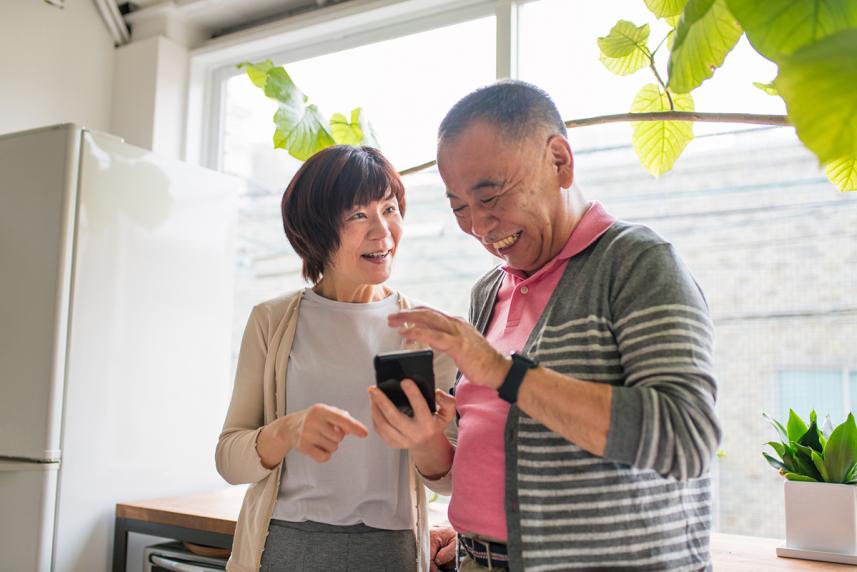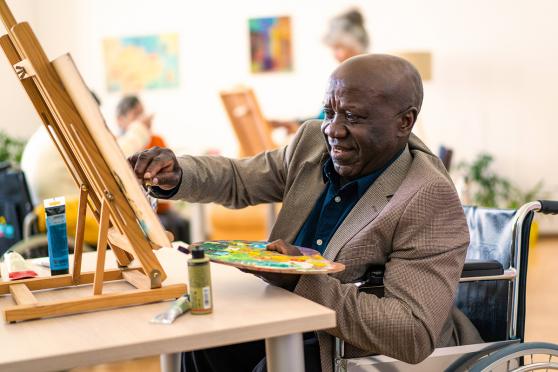Nine smartphone tricks that make daily life easier
Your smartphone can help you read small fonts, remember to take your pills, track your receipts, and more. You just have to find its hidden features.

If you’re reading this, there’s a good chance you’re holding a computer that’s exponentially more powerful than the one used to send astronauts to the moon. But beyond making calls and scrolling social media, many of us aren’t taking advantage of all that smartphone power.
The good news is, we should be able to. In recent years, smartphones have become increasingly easy to use. “That’s one of the great things about these devices,” says Michael Scullin, Ph.D., associate professor of psychology and neuroscience at Baylor University in Waco, Texas. “They’re designed to be user-friendly and keep things simple.”
That helps explain why 89 percent of adults between the ages of 50 and 64 own one, as well as 76 percent of adults over 65, according to a 2024 Statista report.
Have you tapped into your smartphone’s potential? Here are nine features that can help make everyday activities easier.
1. Magnify small text
Squinting at bills and restaurant menus is no fun. Instead, use your phone’s camera as a magnifier. This will make even the teeniest text easy to read.
If you have an iPhone®, search for the preinstalled Magnifier app. Once it’s open, point your camera at the words you want to read and use the app’s slider to make the text bigger.
Some Androids® don’t come with a dedicated magnifying app, but you can still use your phone’s camera. Just open it up, point it at the text you want to read, and zoom in by double-tapping the screen or using the pinch-to-zoom feature.
2. Schedule a daily pill reminder
The most important thing about taking medication? Taking it at the same time every day. If you struggle with consistency, your phone can help.
There are several apps dedicated to setting pill reminders, but it’s just as easy to use the software already on your phone. Scullin recommends using the Calendar app. “You set it up one time, and now you always get the reminder to take your medication at 9 p.m., or whenever you’re supposed to take it,” he says.
In your Calendar app, create an event called “Take medication.” Set it to recur daily, select a time, and turn on notifications for the calendar. Now you’ll get a pop-up minutes before it’s time to take your pills. If you need to take pills multiple times a day, you can set up multiple reminders.
Another option is to use your phone’s alarm clock for a daily recurring reminder. Simply set an alarm for the time you need to take your medication, give it a name like “Take pills,” and make sure it’s scheduled to repeat daily.
3. Keep track of receipts
Are you afraid to toss your old receipts? Don’t be. Just take a photo and you’ll always have a record.
You can easily find these pics thanks to the advanced search functionality in the photo apps on iPhones® and Android® devices. When you take a picture of a receipt, it gets saved into your camera roll. When you type “receipt” into the camera’s search function, your phone will show you only pictures of receipts.
4. Write text messages without typing
The touch-screen keyboard is impressive, but the tiny digital keys can be tricky to use. “A lot of older adults have difficulty with the dexterity needed for the small keyboard,” says Scullin. And that can deter people from sending text messages to their friends or family.
The solution: Find the microphone button on your phone’s keyboard and press it. Now you can dictate your text message and the phone will do the typing for you. Just be sure to speak slowly, so the microphone can better identify your words.
5. Improve hearing in noisy rooms
If you’ve had any amount of hearing loss, you may find it difficult to keep up with conversations in busy places such as cafes and restaurants. Now your phone can assist your ears.
Smartphones are able to process sound in real time and boost the volume of whomever you’re speaking with. When you connect your headphones, you’ll hear the conversation with more clarity than it has in real life.
On an iPhone®, look for the Live Listen function, which is located in the Control Panel. (To access the Control Panel, you’ll either swipe up from the bottom of the screen or swipe down from the top right corner.)
On Android® phones, this feature is called Sound Amplifier. It’s preinstalled on newer Pixel® phones, and you can access it by going to Settings > Accessibility > Sound Amplifier. (If your phone doesn’t already have it, search for the Sound Amplifier app in the Google Play Store.)
Then just make sure your headphones are connected and the feature is turned on. It should sound like you’re turning the volume up on your conversation, so that it’s no longer getting drowned out by background noise.
6. Find a lost phone
Maybe you know someone who has a tendency to leave their phone at restaurants or drop it down between couch cushions. Maybe that person is you. Either way, you’ll appreciate the Find My Phone feature. Once it’s turned on, you can use another phone or computer to track down the missing phone’s location, lock the phone, make it play a sound, or even erase it remotely.
The key is enabling this function first, so you can use it when you need it. On your iPhone®, go to the Settings menu and click your name. Then click Find My and turn on Find My iPhone. Then, to locate your lost phone, use another Apple® device or go to iCloud.com/find.
On Android® phones, the feature is called Find My Device. Head to Settings > Security > Find My Device and turn it on. This preps you to find your phone later — just go to android.com/find on a web browser.
7. Make Siri your kitchen assistant
Your phone’s voice assistant, either Siri or Google Assistant, can help you whip up delicious meals — or at least provide quick answers to everyday cooking questions.
Use your phone’s Settings menu to make sure your assistant is turned on. Then, if you have an iPhone®, say, “Hey Siri, how many ounces are in a cup?” (For Android® devices, swap in “Hey Google” for “Hey Siri.”)
Here are some other kitchen-related questions you can ask your voice assistant:
- “What is the ideal internal cooking temperature for pork?”
- “Can you set an oven timer for 10 minutes?”
- “What is a substitution for egg whites?”
- “What’s the oil-to-vinegar ratio in a simple salad dressing?”
- “What’s the best cooking temperature for a baked potato?”
8. Pay faster at the register
No need to fumble with your credit card when there’s a line forming behind you. Both Apple Pay and Google Pay let you store a credit card in your phone. Then you can settle your bill at a restaurant, grocery store, or gas station by simply tapping your phone against the reader device. Today, millions of businesses all over the country allow payment with a tap of the phone. Apple® claims that 85 percent of U.S. retailers accept Apple Pay.
To get set up on an iPhone®, open the Wallet app and click the plus sign to add a card. Then, to pay this way, double-click your phone’s side button to authenticate with your passcode or Face ID, and then hold your phone near the reader.
On an Android® phone, you may need to download the Google Pay app. Open it up and add your card. When it’s time to pay, unlock your phone and hold it near the reader. Done!
9. Set up an emergency response
The thing about emergencies is that you never know when they’re going to happen. So, it’s smart to always be prepared.
This is especially true if you’re over 65, when the risk of falling begins to increase quickly, according to the Centers for Disease Control and Prevention. Each year, more than 800,000 people are hospitalized for hip fractures, head traumas, and other fall-related injuries.
How can your smartphone help? With its emergency alert feature. In the event of a fall, heart attack, or other crisis, you can use a shortcut to quickly call 911, send out your exact location via GPS, and deliver messages to loved ones and other emergency contacts.
To set up the shortcut in an iPhone®, go to Settings > Emergency SOS. Then make sure the Hold and Release function is toggled on. All set? Hold down the phone’s side button and volume button at the same time, and a countdown timer will appear. When the timer hits zero, an alarm will sound, and you can release the buttons to send out your emergency alert.
With Android®, you can access your emergency services by going to Settings > Safety & Emergency. You might also see an app on your phone called Safety, which accesses the same information. Whether you use the app or your phone’s Settings menu, this is your hub for all things related to emergency response. You can even use it to take video during an emergency. To send out an emergency response through the Safety app, press your phone’s power button five or more times.
If you feel nervous about setting up this emergency response function on your own, ask someone to help. A tech-savvy friend or relative should be able to walk you through everything and help you test it out. That way, you can feel confident using it in a high-pressure situation.


